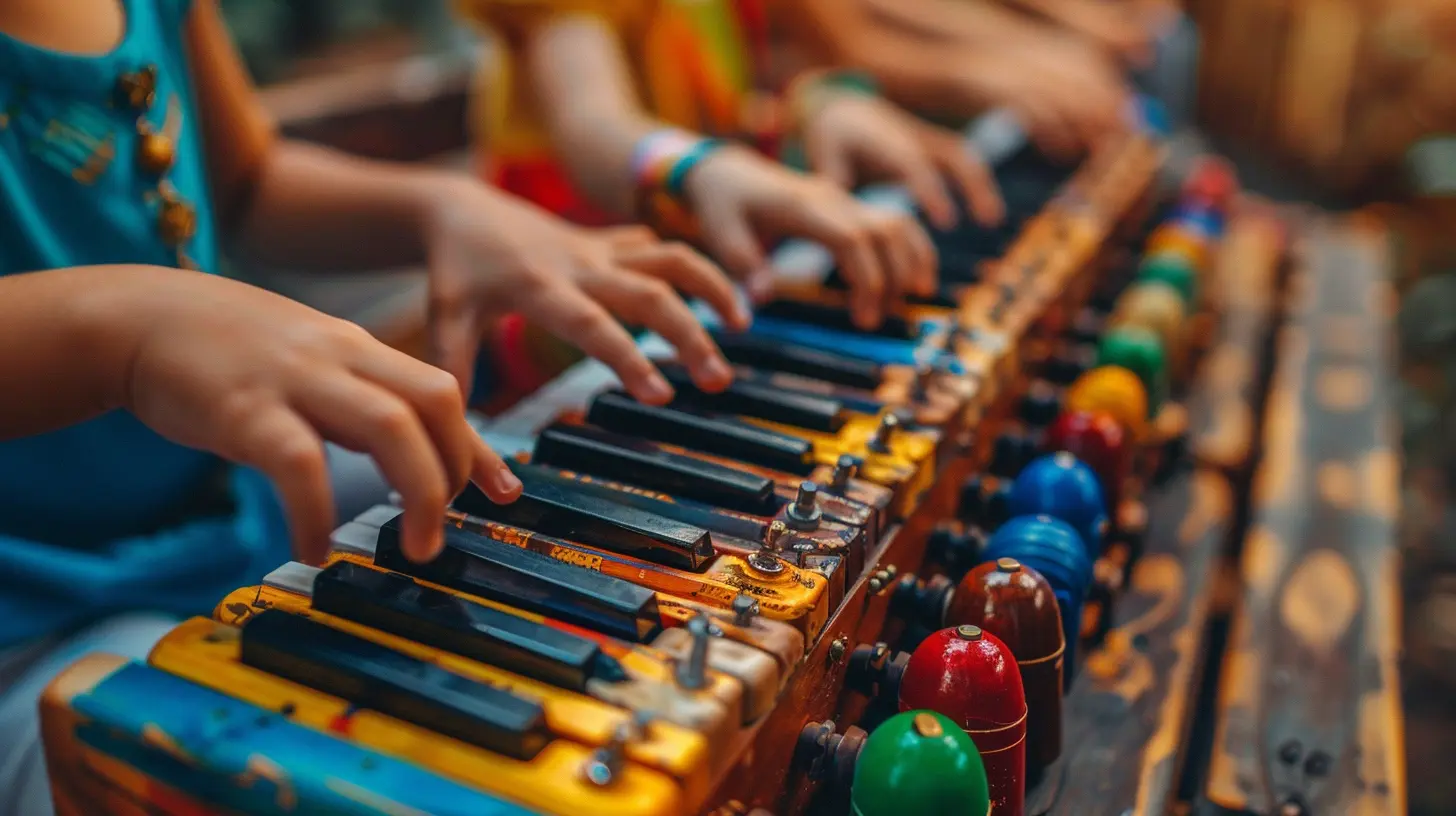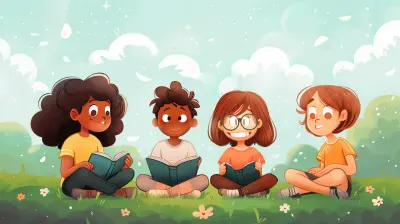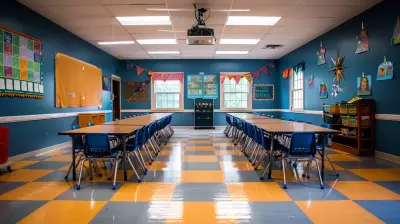The Role of Music in Cultural Awareness and Diversity
2 November 2025
Let’s be honest—music isn’t just background noise. It’s the heartbeat of cultures, the voice of history, and an emotional bridge that connects people across languages and traditions. Whether you're humming a pop song on your commute or getting chills from a traditional tune you’ve never heard before, music has a funny way of sticking with us…and shaping how we see the world.
In this article, we’re diving deep into the role music plays in cultural awareness and diversity. Spoiler alert: it does a lot more than just entertain us.
What is Cultural Awareness, Anyway?
Before we get into the nitty-gritty of music, let’s unpack what cultural awareness really means.Cultural awareness is basically understanding, appreciating, and respecting the differences and similarities among people from different cultures. It’s about realizing that your way isn’t the only way—and definitely not always the “right” way. When you become aware of other cultures, you start to see the beauty in diversity rather than treating it as something foreign or strange.
Okay, but where does music fit into all this?
Music: More Than Just a Vibe
Music is like a universal language. You might not speak Japanese, but a J-pop tune can still make you smile. You might not understand the lyrics in a Swahili folk song, but it can still move you emotionally. That’s the magic of music—it taps into human emotion in a way that crosses borders and breaks language barriers.Bridging the Cultural Gap
Ever listened to a song from another country and found yourself Googling the lyrics just to understand what it means? That moment of curiosity is cultural awareness waking up inside you—thanks to music.Music has this gentle, non-threatening way of introducing us to cultures we might not otherwise explore. It opens up the door to different traditions, values, and worldviews. It doesn’t preach or judge; it just invites you to listen.
A Quick Journey Through Global Sounds
Let’s take a mini world tour, shall we?- Africa: From Afrobeat to traditional drumming, African music is deeply rooted in storytelling and community. It often involves rhythm-heavy beats, call-and-response singing, and instruments like the djembe.
- India: Indian classical music like Hindustani and Carnatic styles is heavily tied to spirituality. And don’t even get us started on Bollywood—those tracks are a genre of their own!
- Latin America: Think salsa, reggaeton, tango... Each genre reflects a mix of indigenous, African, and European influences.
- Middle East: Melodic scales and complex rhythms dominate here, with instruments like the oud and darbuka creating rich, intricate sounds.
Can you see how music reflects the soul of its culture? Every instrument, beat, and lyric tells a story that goes way beyond entertainment.
How Music Promotes Cultural Awareness
Now, let’s break down how music actually helps us become more culturally aware.1. It Sparks Curiosity
You hear a song from another culture and suddenly you want to know more. Where is it from? What’s the song about? What language is that? This curiosity is the first step toward cultural understanding.2. It Creates Empathy
Music often reflects the struggles, joys, and everyday life of a culture. When you hear a protest song from a war-torn country or a love ballad sung in a language you don’t understand, you still feel something. That emotional connection breeds empathy, which is a cornerstone of cultural awareness.3. It Breaks Stereotypes
Let’s be honest—most cultural stereotypes come from ignorance. But when you start listening to diverse music, you realize there’s so much more to a culture than what you see on TV or in movies. Music can be the wake-up call that breaks down those walls.4. It Encourages Inclusion
Whether it’s playing global tunes in classrooms or featuring multicultural artists at music festivals, music helps create inclusive spaces. And feeling included is a big deal, especially in a multicultural society.Music in Education: A Cultural Toolbox
You know what’s underrated? Using music as a teaching tool.Let’s talk classrooms. When teachers incorporate music from various cultures into their lessons, students don’t just memorize facts—they experience them. Instead of reading about a country in a textbook, students get to feel the rhythm, hear the language, and understand the vibe of a place through its music.
Plus, it makes learning way more fun. Who wouldn’t prefer dancing to a salsa beat over filling in a worksheet?
Benefits of Using Music in Cultural Education:
- Enhances memory and engagement- Helps students understand cultural context
- Encourages open-mindedness and curiosity
- Fosters emotional intelligence
Music brings diversity to life in a way that’s accessible and enjoyable. It hits you in the heart before it hits you in the head.
Music as a Tool for Social Unity
Think about global events like the Olympics, FIFA World Cup, or even international music festivals like Coachella. What’s one thing they all use to bring people together, regardless of where they’re from?Yup, music.
At its core, music unites. It creates common ground in a world full of differences. People from all sorts of backgrounds can come together, sing along, dance, and share a collective moment of joy. It's like magic—but real.
Collabs That Changed the Game
Let’s not forget those awesome cross-cultural collaborations. When artists from different parts of the world join forces, it sends a powerful message: we’re different, but we’re better together.Examples? Think:
- “Waka Waka” by Shakira featuring African rhythms for the 2010 World Cup.
- BTS working with Halsey or Coldplay, blending East and West in perfect harmony.
- Paul Simon’s Graceland album, which showcased South African sounds during apartheid.
These collaborations aren’t just bops—they’re bridges between cultures.
Music and Identity: A Personal Connection
Here’s where things get super personal.Music isn’t just cultural—it’s personal. It helps shape identity. The songs you grew up with, the ones that remind you of home, those summer anthems you played on repeat—they all become part of your story.
Now imagine growing up in a multicultural family or migrating to a new country. Music becomes a way to hold onto your roots while also embracing new influences. It’s like carrying a piece of your homeland in your earbuds.
Challenges and Considerations
Of course, it’s not all smooth sailing. There are some issues we need to address when talking about music and cultural diversity.Cultural Appropriation vs. Appreciation
Let’s be real—there’s a fine line between appreciating another culture and profiting from it without respect.When artists borrow elements from a culture they don’t belong to—especially without giving credit or understanding the history—it can feel exploitative. That’s appropriation.
Appreciation, on the other hand, involves learning, respecting, and acknowledging the source. It’s about honor, not ego.
Keeping Traditional Music Alive
In our fast-moving, TikTok-driven world, traditional music styles can get sidelined. We’ve got to make conscious efforts to preserve and promote folk, indigenous, and heritage music. It’s part of our shared human legacy.Final Thoughts: Why This All Matters
So yeah, music is fun. It makes us dance, cry, and feel all the feels. But it’s also so much more than that.Music is a passport to a deeper understanding of the world around us. It pushes us out of our comfort zones, challenges our assumptions, and helps us see—and hear—life through someone else’s ears. In a world that’s increasingly divided, music reminds us that we’re not as different as we think.
Next time you bop your head to a beat from another country or hear an unfamiliar tune that touches your soul, pause. Ask yourself what it’s trying to tell you. Because odds are, it’s saying something powerful.
So go ahead—press play on diversity.
all images in this post were generated using AI tools
Category:
Music EducationAuthor:

Eva Barker
Discussion
rate this article
1 comments
Jocelyn Lopez
Let the music unite!
November 5, 2025 at 5:02 AM


